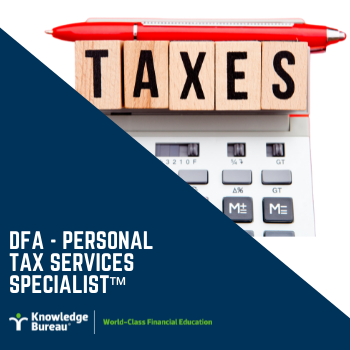Getting New T3 Trust Returns Right

Diane Elliott, DFA - Tax Services Specialist, RWM-Real Wealth Manager
Tax compliance regarding T3 Trust returns is in the spotlight as new efile requirements begin for the tax filing years ending December 31, 2021 forward. Here’s a primer on what you need to know; a preview of a newly revised professional certificate course, Filing T3 Trust Returns at Knowledge Bureau by Faculty Member and Instructor, Diane Elliott.
There are many types and reasons for existence of T3 Trust Returns. These include Graduated Rate Return (or three years after the death of a taxpayer), spouse trust, alter-ego inter vivos  trust, family trust and many more.
trust, family trust and many more.
Prior to 2021, T3 Trust Returns could only be paper filed. Supporting paperwork was required to be attached to the T3 return. This included paper copies of information slips and, in the first year after death, a copy of the will. Traditionally, the trust account number (TIN) could be applied for when filing the first year’s trust return.
For a few years prior to 2020, the T3APP had to be mailed in separately prior to filing the first trust return. The trustee or executor (and their trusted tax specialist) would wait any number of months for this to be processed. 2020 was the first year the request for a trust account number (T3APP) could be submitted electronically. That was a welcome change.
More good news, at least for the tax filing industry: for trusts with a year ending in 2021 and subsequent years, they are now able to be submitted through the EFILE system! I am pretty certain I heard the collective cheer from tax specialists Canada wide when this was first announced! Tax preparers will use the EFILE number already issued to them for T1 and T2 returns. If you are a registered EFILER, be certain to add T3’s when you are submitting this year’s renewal request.
Note, the CRA has just published the T183 Trust E Form, Information Return for the electronic filing of a Trust Return on its website on November 3.
The T3APP can be applied for through My Account or Represent a Client. This process has proven to be fast and efficient. Word of caution, however: be certain to print or otherwise record the Trust Account Number immediately after it is issued. It is not possible to retrieve this number electronically after initially issued.
This is welcome news for everyone, not just tax specialists. Every individual who is personally connected to a trust and those professionals who collaborate with tax specialists to offer financial or estate services for their clients will also benefit from a streamlined, time efficient filing process. However, what is unwelcome, at least for some, is the transparency these new rules give to CRA at the expense of individuals connected to the trust.
Diane Elliott is Founder of Millennium Tax Services, Cambridge, Ontario and a Knowledge Bureau Faculty Member.
